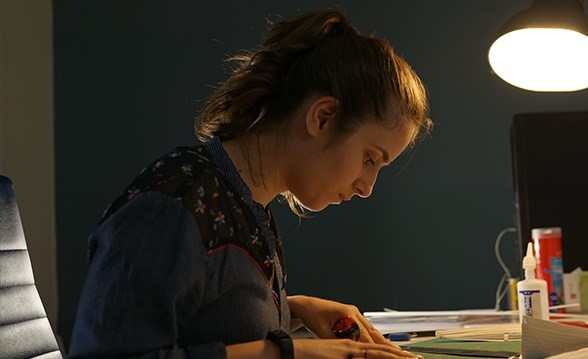
Summary:
Industrial design registration requires companies to prioritize R&D because it provides a competitive advantage. Authorized official institutions also support innovative activities and efforts to improve the quality of life and contribute to the economic growth of production and supply. The Turkish Patent and Trademark Office, which manages the registration processes, publishes annual statistics on patent, design, and trademark applications to announce the parameters of development. However, in the presentation of industrial production, protecting value-added products created through the implementation of a design or utility model against imitation and encroachment presents difficulties. These are partly judicial and largely administrative issues.
A. INTRODUCTION
The Industrial Property Law No. 6769 (hereinafter referred to as IP Law or SMK) protects the tangible appearances of products/objects, which are the manifestation of intellectual labor, although we are not always aware of them in daily life, and grants exclusive rights under certain conditions. Design arises as the outward expression of the designer’s intellectual world and is perceived sensorially by users on the product on which it is materialized. This industrial right is considered a hybrid between a patent and copyright, actually falling somewhere between these two types of rights. It is an undeniable fact that products carrying design touches simplify our lives, attract purchasing interest when displayed on shelves, and provide a competitive advantage to their producers and sellers. Indeed, relevant state authorities encourage sector members to expand R&D activities, employ designers, produce innovative products, and create niche products, sometimes providing financial support.
In recent times, the term “design” has been replaced by “dizayn” in our language. The word “design” comes from the Latin “designare,” which means to form or represent. However, whether in industrial or handcrafted production, when it comes to the protection of new and distinctive designs through registration or without registration, the term "design rights" as defined by the law is appropriate.
Design is a materialized reflection of the creator’s internal world. Accordingly, it begins as an idea in thought, but this idea, which contains the dynamics of form-giving, materializes and externalizes through this shaping process, becoming a physical object. Therefore, in every design case, there is both an "idea" and a "designed object."
New and distinctive product designs are protected by registration or, even without registration, under unfair competition principles. Design protection, as another area of industrial property protection, is regulated in detail with regard to the registration process and the establishment of rights. One of the significant innovations of the IP Law is that it addresses the frequent need in the fashion sector, providing protection for unregistered designs within the same framework.
Today, design rights are among the most widely used industrial rights, and they are increasingly recognized by producers and users alike to create differentiation between products. Innovative designs ensure business success and a competitive advantage in the market, making them valuable intellectual and industrial property rights. Especially in durable consumer goods, creating new and distinctive designs to stimulate consumer curiosity and purchasing appetite leads to competitive success. The imitation or unfair design registrations in this area result in lawsuits against competitors.
B. DEFINITION AND THE SIGNIFICANCE OF REGISTRATION
The dictionary definition of design is "the act of designing or the shape or idea formed," or "all the products such as projects, drawings, models, etc., that guide the creation of the actual work." Design law, in essence, focuses on appearance. Indeed, it is evident from the rules that govern the registration process that design concerns appearance. According to the relevant provisions, when applying for a design registration, the visual expression of the design must be specified. When evaluating the distinctiveness of designs, an informed user must compare the designs through visual perception. According to Article 55 of the IP Law, "A design is the appearance of the whole or a part of a product, or its decoration, which results from the features of lines, shapes, forms, colors, materials, or surface textures." The law emphasizes the appearance in its definition of design. The term "product" is also defined in the following section. According to this definition, a "product" refers to any object produced industrially or manually, including a combined product or its parts, packaging, and even the combined presentation of several objects, graphic symbols, and typographic characters.
The practical importance of these definitions is seen in the rejection of applications by the Turkish Patent and Trademark Office that do not comply with these definitions.
Registered and unregistered designs are the most widely applied industrial property rights after trademarks under the IP Law. The provisions related to design registration are contained in Articles 55 to 81 of the IP Law. A registered design can be renewed five times to provide protection for up to 25 years; unregistered designs are protected for 3 years from the first public disclosure if they meet the same criteria.
A company's product, developed with design, has superior features compared to existing competing products in the market, standing out and being noticed. Of course, design registration can only be obtained through significant intellectual efforts, research, and investments. The added value created through this process is total quality improvement and proper quality management, which provides the design owner not only with a competitive advantage but also social benefit. Despite some negative side effects, the rapidly developing technology serves the increasing and diversifying human needs. The innovativeness of designs accelerates and benefits from this inevitable progress.
C. IMPLEMENTATION PROBLEMS
- Challenges in Protecting Design Rights Against Unfair Competition
Although significant progress is made through the registration or public disclosure of a design, the real struggle begins after this point. As a rule, the explicit protective provisions of the IP Law apply against imitation and infringement. However, solving violations in this area becomes difficult in a sluggish judicial system; often, the efforts of those who invest in innovation do not yield the expected results. This highlights a lack of understanding of the intangible "property" nature of design rights. These issues point to a weak perception of design rights. Competitors, decision-makers, consumers, and users often fail to give due respect to the rights arising from registered or unregistered designs.
The protection of design rights is unequivocally ensured through registration. In case of imitation or interference with the protected area, counterfeit products can be removed from the market, collected, and compensation claims can be pursued. In such cases, there are also criminal penalties for unfair competition actions under the Turkish Commercial Code (TTK). If these unfair competition actions are properly addressed with legal intervention, reasonable results can be obtained within the country's conditions.
- Problems Regarding Public Institution Purchases
The first notable contradiction here is that, while the principle of equality prevails in competition, the laws are inconsistent at certain points. Specifically, the IP Law and the Industrial Designs Protection Law No. 554 (prior to January 10, 2017) define, regulate, and protect design registration, while the Public Procurement Law No. 4734 (hereinafter referred to as the PPL) includes a provision in Article 12/3 stating that "a specific brand, model, patent, origin, source, or product cannot be specified in the specification; references to a specific brand or model are not allowed." It appears that these terms have not been selected with the required legal precision. Furthermore, the differences in the content and function of these terms have not been considered.
On one hand, the law and institutional authorities encourage competition and innovation, while on the other hand, legal provisions in public procurement can lead to the interpretation that industrial property rights should not be used, to ensure equality and transparency. However, under the "Design Support Regulation" (2008/2 Circular), design companies, design offices, and cooperative organizations can receive support for their promotional, advertising, marketing, employment, patent, utility model, and industrial design registration expenses.
While a "new and distinctive" product design in a well-known technical field ideally grants temporary monopoly rights, products made by companies that do not make the same investments or efforts, based on imitation, may be preferred under certain market conditions. This is particularly evident in public procurement.
In public procurements, sometimes the quality sought in the product can be defined by the industrial property rights on the product, and these features may be included as part of the specification. If no objections are raised within the legal time frame, the specification becomes final, binding all participants in the tender process. Even public institutions are bound by the finalized tender specifications. According to Article 29 of the Public Procurement Law No. 4734, "Once an announcement is made, no changes can be made to the tender document. If a change is necessary, the reasons must be documented, and previous announcements will be invalidated, and the job will be re-announced in the same manner."
Therefore, when a specification involves a product with certain quality standards and technical requirements, the acceptance and final approval processes must follow these principles. This will not only ensure adherence to the law by public institutions but also contribute to the improvement of public services, resulting in higher quality outcomes.
















